Who Controls the User Experience? AMD’s Carrizo Thoroughly Tested
by Ian Cutress on February 4, 2016 8:00 AM ESTBenchmark Results: CPU Short Form
Here are our results from our CPU tests. A reminder of our systems:
| System Overview | |||||
| µArch | APU | Base / Turbo MHz | Memory | Channel | |
| HP Elitebook 745 G2 | Kaveri | A10 PRO-7350B (19W) | 2100 / 3300 | 8 GB | Dual |
| HP Elitebook 745 G3 | Carrizo | PRO A12-8800B (15W) | 2100 / 3400 | 4 GB | Single |
| Toshiba Satellite E45DW-C4210 |
Carrizo | FX-8800P (15W) | 2100 / 3400 | 8 GB | Single |
| HP Pavilion 17z-g100 |
Carrizo | A10-8700P (15W) | 1800 / 3200 | 8 GB | Single |
| Lenovo Y700 | Carrizo | FX-8800P (35W) | 2100 / 3400 | 16 GB | Single |
Three Dimensional Particle Movement (3DPM)
3DPM is a self-penned benchmark, derived from my academic research years looking at particle movement parallelism. The coding for this tool was rough, but emulates the real world in being non-CompSci trained code for a scientific endeavor. The code is unoptimized, but the test uses OpenMP to move particles around a field using one of six 3D movement algorithms in turn, each of which is found in the academic literature. This test is performed in single thread and multithreaded workloads, and uses purely floating point numbers. The code was written in Visual Studio 2008 in Release mode with all optimizations (including fast math and –Ox) enabled. We take the average of six runs in each instance.
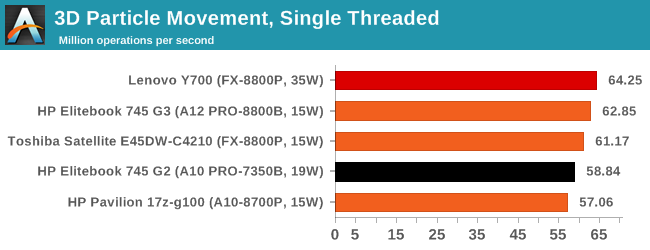
In the single threaded mode, the 35W part is able to boost to a higher frequency, giving it the lead. The interesting element here is the mix of 15W and 19W results, putting the Pavilion with the A10-8700P at the bottom. This comes through in the frequency charts, where the Kaveri was able to boost above 3000 MHz often:
For multithreaded:

The processors line up more as expected, with the 8800P still taking the top spot with Carrizo’s architecture resources showing the ability to scale better.
WinRAR 5.01
WinRAR is a compression tool to reduce file size at the expense of CPU cycles. We use the version that has been a stable part of our benchmark database through 2015, and run the default settings on a 1.52GB directory containing over 2800 files representing a small website with around thirty half-minute videos. We take the average of several runs in this instance.
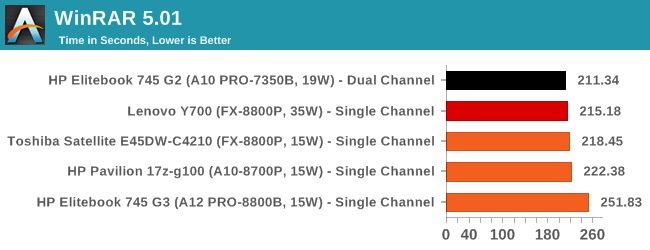
WinRAR is a benchmark which loves DRAM speed, hence why the dual channel Kaveri system wins despite the increased horse power and thermal benefits of the Lenovo Y700. Unfortunately, the single channel design methodology permeates through the OEMs because of the factor of price and upgradability – if a machine is sold with only one module, it can be upgraded later. The other element is that the Y700 design also caters for Carrizo-L as pin compatible, so despite having two modules in there the system will always be limited to single channel. This is, perhaps, a grave error with any situation that is memory limited.
POV-Ray 3.7 beta
POV-Ray is a common ray-tracing tool used to generate realistic looking scenes. We've used POV-Ray in its various guises over the years as a good benchmark for performance, as well as a tool on the march to ray-tracing limited immersive environments. We use the built-in multithreaded benchmark.
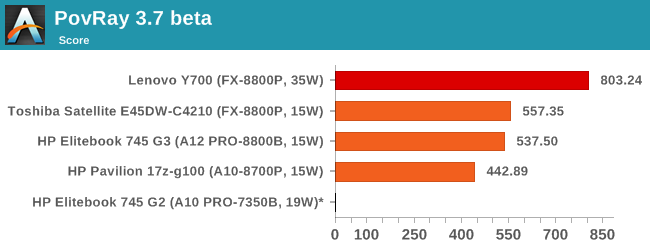
For whatever reason, our script failed to record the score when it came to the Kaveri system and we only realized after the systems were returned. Nonetheless, the capabilities of the other systems shine through, showing that the A10-8700P can seem to have a big frequency discrepancy against the FX-8800P models. In actual fact this can be attributed to the temperature limitations on the Pavilion:
The full threaded nature of POV-Ray means that we’re on the limits of the A10 APU already, but when the system hits 55C or so, it clocks back to 2100 MHz to save a few extra degrees.
If we compare that to the Toshiba:
The Toshiba system also hits a temperature limit, but the barrier is way up at 70C, causing the system to knock back to 64C. The CPU frequency difference between the two does not look that different despite the +25% score in favor of the Toshiba, making it slightly deceptive.
HandBrake
HandBrake is a freeware video conversion tool. We use the tool in to process two different videos - first a 'low quality' two hour video at 640x388 resolution to x264, then a 'high quality' ten minute video at 4320x3840. The low quality video scales at lower performance hardware, whereas the buffers required for high-quality can stretch even the biggest processors. At current, this is a CPU only test.
Unfortunately HandBrake also had issues on a couple of systems – the Lenovo and the Toshiba. All the HP systems gave results, where the HP Pavilion came out on top:


If we compare CPU use, the HP Pavilion is much better at using all of its threads than the Elitebook 745 G3:
7-Zip
7-Zip is a freeware compression/decompression tool that is widely deployed across the world. We run the included benchmark tool using a 50MB library and take the average of a set of fixed-time results.
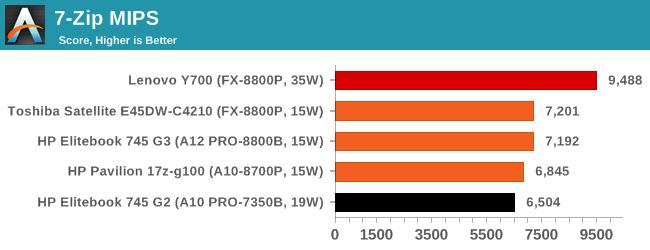
Despite being a purely in-memory benchmark, the G2 shows some inefficiency compared to the Carrizo systems. The slight discrepancy between the 8800 and 8700 shows again, and the Y700 can stretch its legs. Interestingly, the Y700 was able to keep its full CPU frequency on all the time:
Despite the temperature of the CPU moving between 55C and 65C, the system never once reduced its frequency.







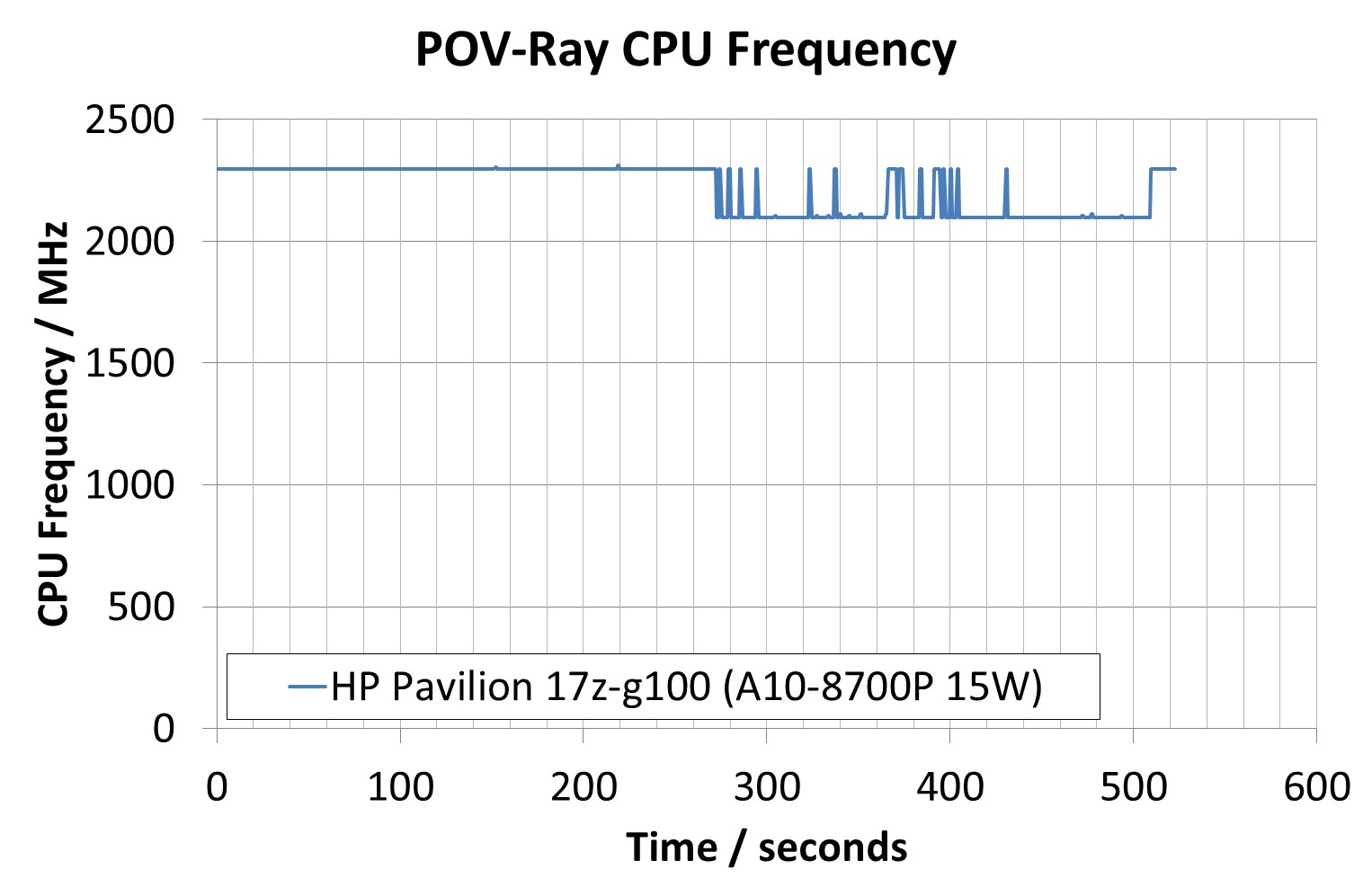
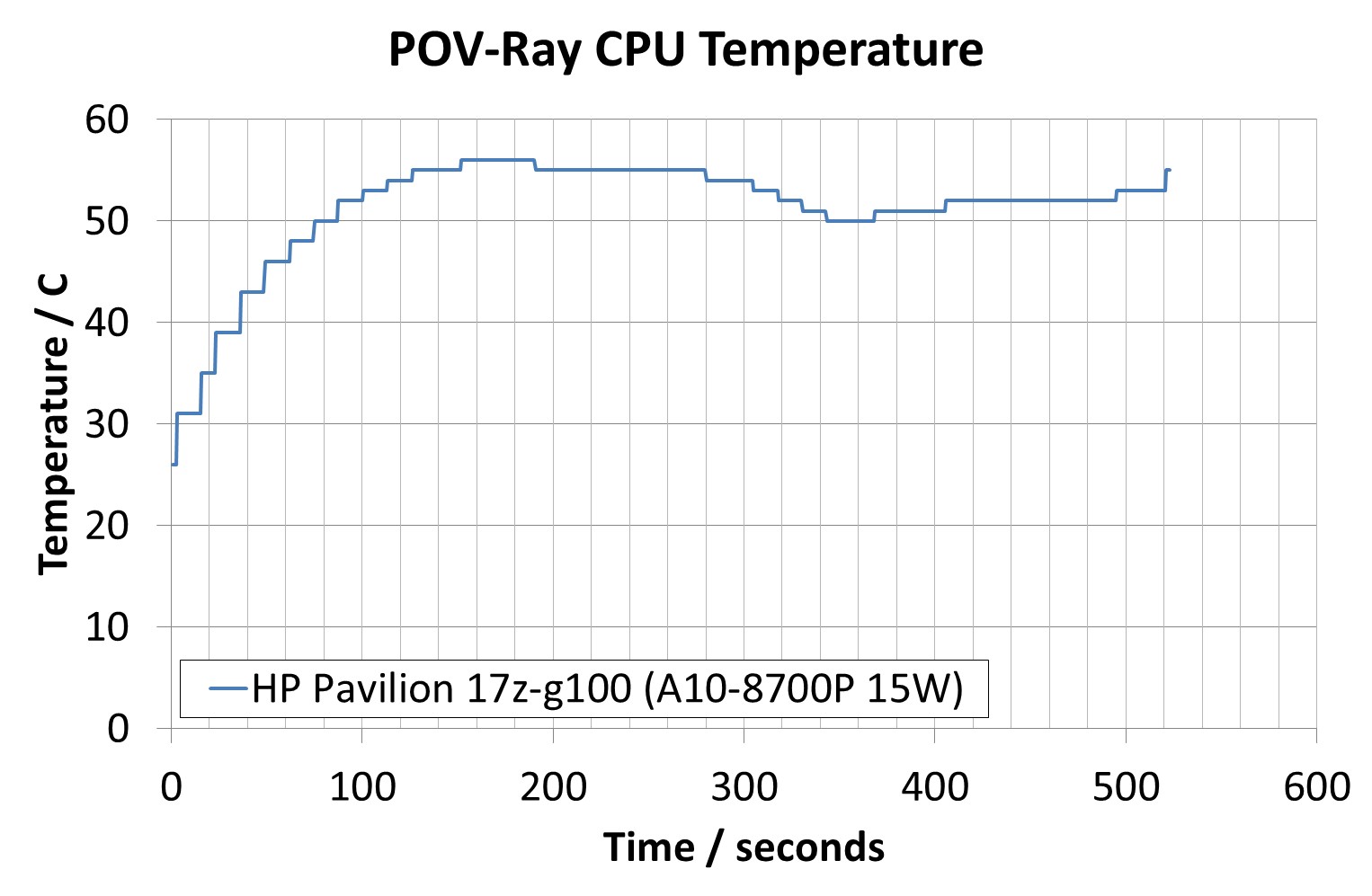


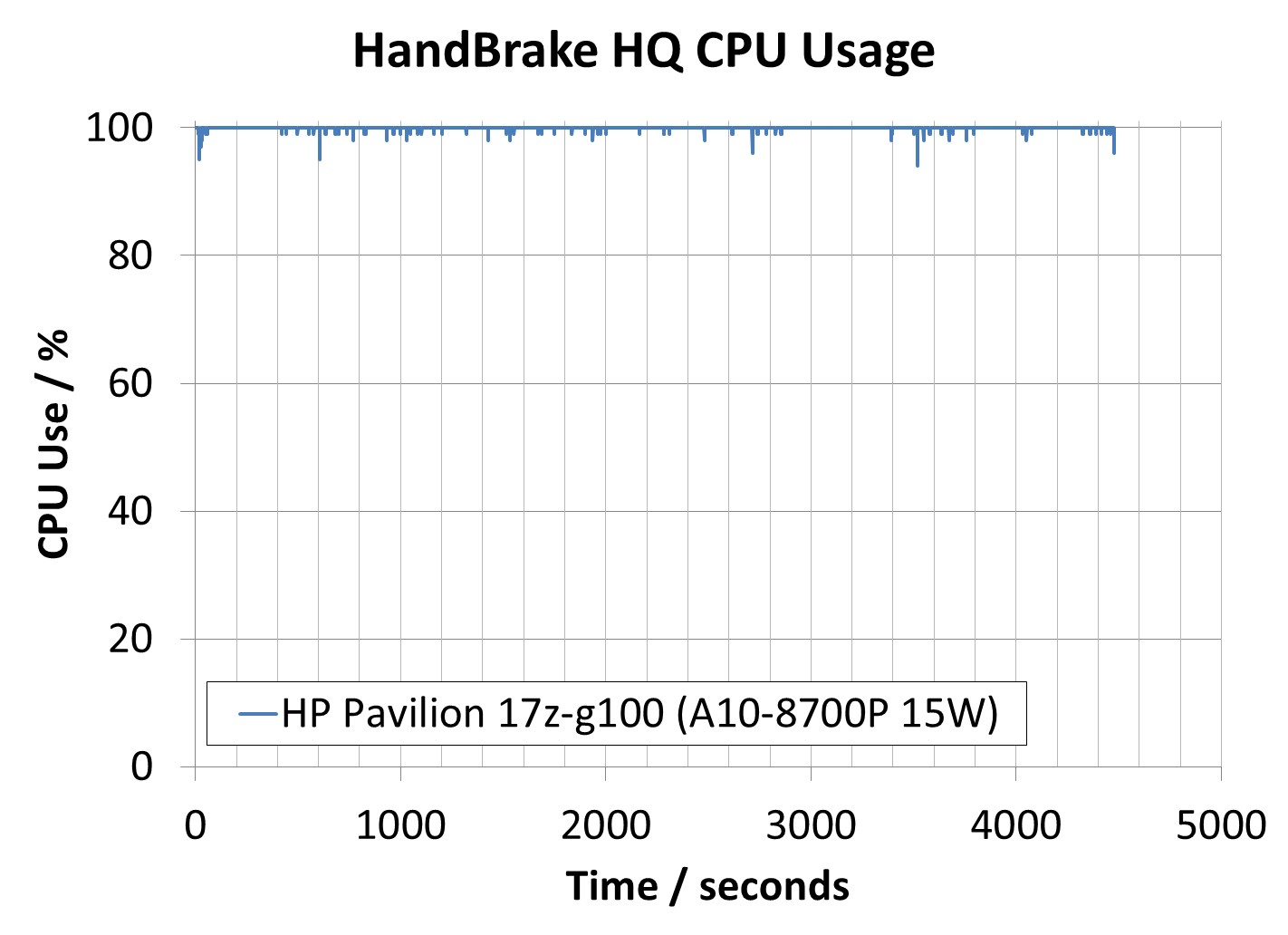

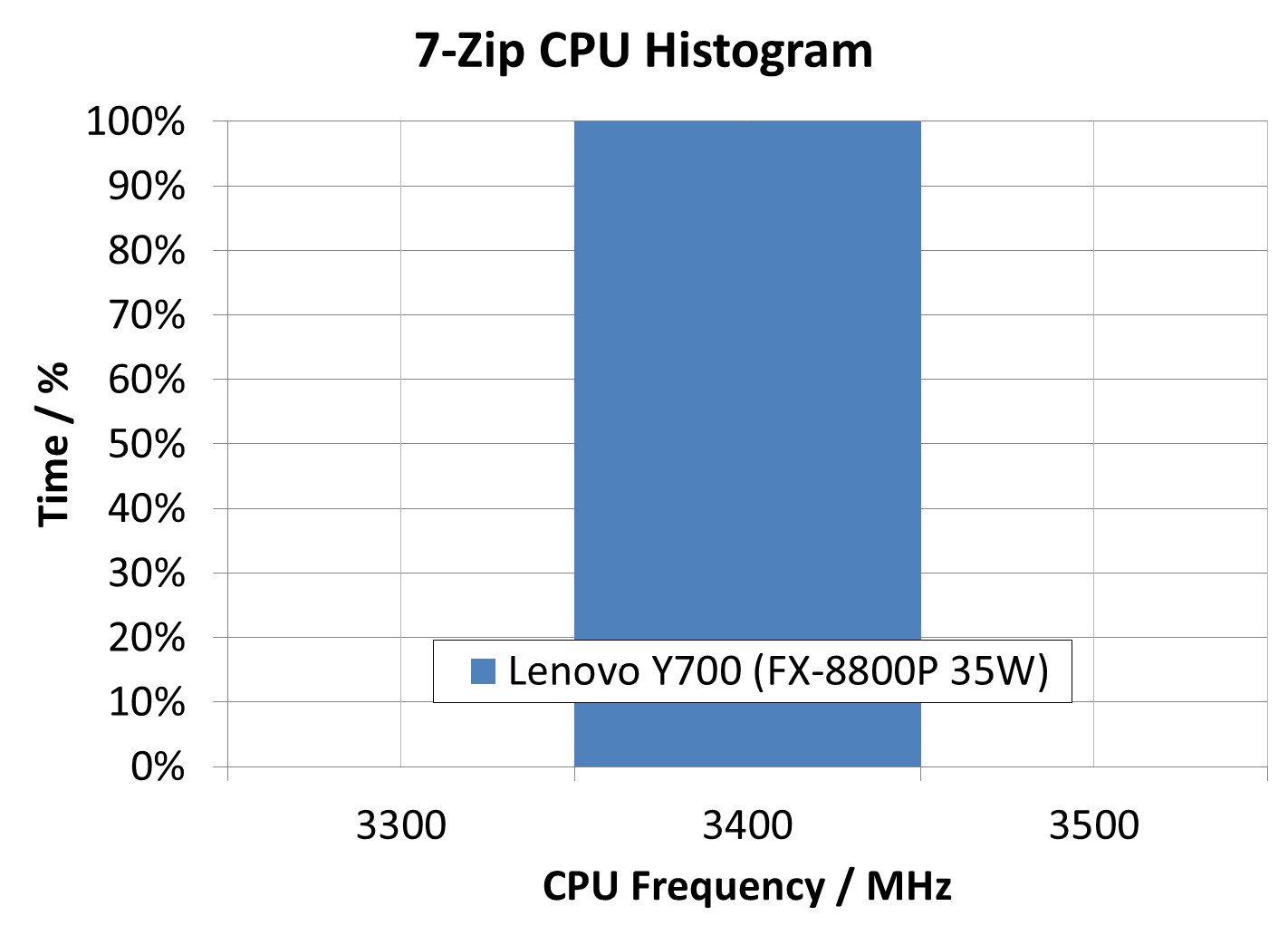









175 Comments
View All Comments
ncsaephanh - Monday, February 8, 2016 - link
Can you guys do a podcast on this article? Would love to hear you guys discuss it and also answer questions/comments on the article.ET - Monday, February 8, 2016 - link
Nice to see a Carrizo article finally, although it's rather disappointing, for example because only single channel was tested.You talked about solutions, here's how I see what AMD and publications like Anandtech need to do (I'm using Carrizo as an example, but it's a lesson for the future):
AMD: When Carrizo is available in a laptop, send one to Anandtech. Immediately. If you have a prototype before that, send that. We want to learn about the chip as quickly as possible, not have to wait months looking for nuggets of information on the web.
Anandtech: Benchmark the hell out of the laptop. If there's single channel with a dual channel option, show a comparative benchmark, but concentrate on dual. We're enthusiasts, we'll install a second DIMM to get better performance. For benchmarks, basic system performance and a plethora of games, and comparison to Intel, plus battery life. Deep dives are nice, but I'd rather have a quick overview of what the system is suitable for, and what kind of gaming it can achieve.
AMD: Desktop first! I know that laptops are where the money is, but desktop is where the enthusiasts are, and if your chip is worth anything, fans and publications like Anandtech will pair it with the fastest memory, configure it with the best TDP, and see what it's really capable of. OEM limitations will not get in the way.
AMD: Fans first! That's pretty much a repeat of the previous point, but AMD, you still have fans, and they are your best customers, not the OEM's or the clueless general public. If you make something that you think is good and you let your fans learn of it and get hold of it, they will tell you what they think and they will tell others. If you leave them in the dark, they will end up losing their enthusiasm.
Anandtech: Follow up on AMD stuff. It may be hard to get the latest AMD chips if AMD isn't helping, but at least let us know you're on it. An occasional news item telling us that you've tried to get some laptops for testing or whatnot will tell us that you're on it, and hopefully shame AMD and the OEM's enough to get a move on.
Personally, I would likely have bought a Carrizo system if there was one of similar size to my old Thinkpad X120e (which I still use, even if I'm not that happy with its speed). I might have bought a Carrizo for my HTPC if I could and I knew it provided decent enough performance.
sofocle10000 - Monday, February 8, 2016 - link
I just signed in to state that Asus had nice business/multimedia notebooks (I used N60DP/N56DP and I actually use an N551ZU - all based on AMD), and although my actual N551ZU is only based on the top of the line Kaveri, it is an exceptional machine for normal use/light gaming...Customers play a big part in the AMD problem, but if there were more incentives (take my current N551ZU, which is a great notebook for ~750-850 $, and if configured with an SSD, you could hardly tell it apart most of the time from the Intel i5H/i7QH + GTX 950M variants), not only a great price, but a better build quality, display, sound system the the market average, some of them would actually pay more attention to the AMD.
The OEM's should have a more defined bottom line for the AMD notebooks - were dual channel memory and a better display, a hybrid SSHD or a SSD are a must, especially for the models in the upper part of the price range 400-700 $...
dragosmp - Monday, February 8, 2016 - link
@Ian - great article, really a good example of investigative journalism. I'm happy this kind of articles are being revived, but being a reader of Tom's I see where this may be coming from.As the "guy that says what laptop/phone to buy" to my family and friends I have to say your findings and conclusions speak to me very clearly - AMD has a system-problem, not so much a CPU-problem (though some may argue differently). AMD chips are fed into cheap looking/feeling PCs with far too many corners cut, but this is how under 700$ market looks like. Could AMD's OEMs sell a 600$ 13" PC to compete with the CoreM UX305? I think not, simply because AMD's CPUs (who consume more) need thicker chassis with stronger cooling and a beefier battery and that costs money - so there's less available for the UX; even if the OEM accepted lower margins on the AMD PC, or AMD to sell the CPU at bargain prices, that design compared to the UX305 would be thicker and likely noisier.
If Zen is good, I could see it in a Mac as Apple has a history of doing good software. Or AMD should build their own surface line and set an example of what can be done.
Gunbuster - Monday, February 8, 2016 - link
People buy the cheapest $300 laptop they can get or something premium. Who are they targeting with these mid-rangers?farmergann - Tuesday, February 9, 2016 - link
Wife uses her Y700 for school and a few hours of photo editing every week. Exactly what she wanted. This article did a worthless job of representing the actual Y700 w/fx8800p you can pick up at Best Buy for $665-830. Everything is fantastic about it save for the TB HDD which I immediately replaced with a Samsung 850 Pro I had laying around.Somehow, this "investigative" nonsense missed the fact the U.S. Y700 has a superb little IPS screen with Freesync to go along with a surprisingly (truly) good sound system and -despite the author's claim- dual channel ram. Just for grins I've played BF3 and a few other games - none of which had issues. Great low/mid-range laptop with plenty of chops.
every1hasaids - Tuesday, February 9, 2016 - link
Nope, the US model is absolute garbage. They skimped on the VRMs and the laptop subsequently throttles in moderately intensive CPU tasks. Example, try running Cities: Skylines with a decent sized city and tell me that it doesn't stutter after about 20 seconds of play and every 5 seconds or so after that. The stutters which coincide with the CPU being utilized near 100% and the frequency dropping per resource monitor and Afterburner all the way down to 1.6ghz... Also I don't know what you're talking about with the Freesync capability, I could not get it to work after reading elsewhere that it may be possible.The main issue with a product like the Y700 is that the intel variant is only a couple hundred bucks more and you get a genuine quad core with HT, dual channel DDR4-2133 and comparable discreet graphics. Oh, and it has no trouble with voltage supply. Not to mention that the m.2 interface is PCI-E as opposed to SATA on the AMD model. It just doesn't make sense to purchase a far inferior product for only $200 less at the price point these models occupy.
farmergann - Thursday, February 11, 2016 - link
Cities: Skylines? LOL, that's about as rich as whining about Starcraft 2 performance on an FX Octacore - what were you expecting exactly? For people not looking to shove a laughably CPU bound title down a 35W laptop's throat, the FX8800p with user installed SSD is a far better choice, sorry guy.Peichen - Monday, February 8, 2016 - link
Wow, that's wasting a lot of time and words reviewing a product no one will buy. AMD needs to exist to keep the cheap Intel stuff dirt cheap but I don't feel anyone should waste time reviewing AMD CPU products. 10 years of marketing hype and under-delivery means AMD is actually slower than ever compares with Intel.I bought 2 AMD CPU over the last 6/7 years and frankly I wish I spend more buying Intel because I wouldn't have to spend time and money as often upgrading the CPU.
Danvelopment - Monday, February 8, 2016 - link
The way I see it, AMD needs to stop comparing themselves with themselves and needs to compare themselves with the competition. People don't understand the improvements if they aren't involved with the predecessor.They produce a reasonable product that performs at 60-80% of the competition at 50% of the price.
Good designs are produced for the competition, that could fundamentally have their parts, and they're losing on the design front.
And strangely, for similar products the AMD machines are the same cost, even though the difference is the chip (at halfish the price).
Can they not work to develop an easier transition method for OEM's to produce this-or-that designs that allow end users to pick AMD or Intel during the selection process. Tier them like Dell does for the various Intel processors but have them consistently show up as the cheapest option $100 off a $500 laptop is a decent drop and if the chip and PCB is $150 cheaper to produce the OEM still wins).
Differentiating the product creates too many variables people don't understand, and creates the issue above, CPU brand aversion on entire product stacks with no common ground.
I'd say take a long, hard look at current machines, and develop a method of getting their chips into them as an option, without OEMs designing a product from the ground up.
I'd certainly consider AMD if I could just select it as an option that knocks $100 off on the low cost tier laptop in my workplace.